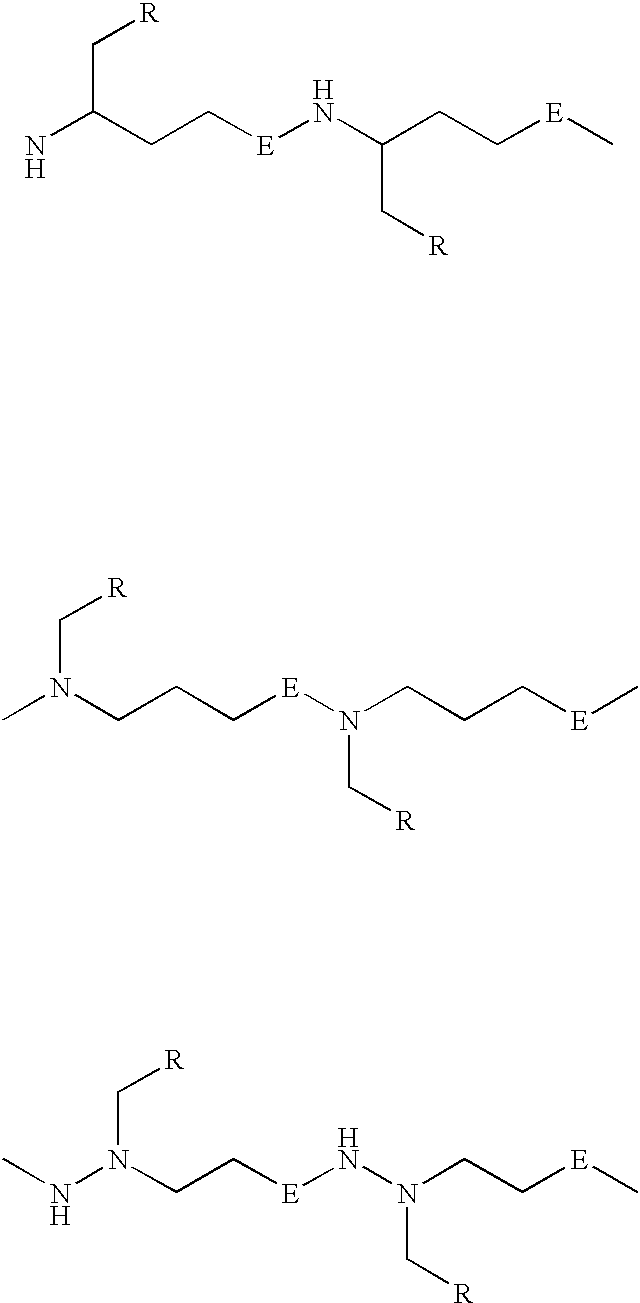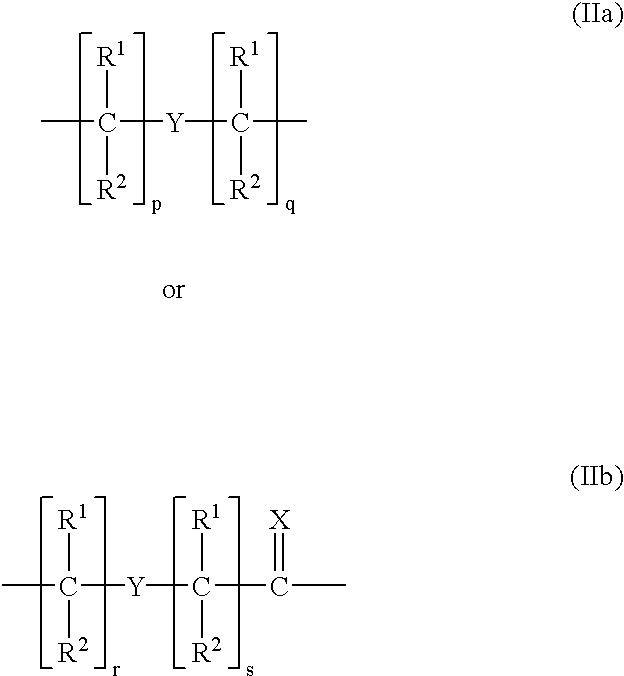Peptide nucleic acids
a technology of peptides and nucleic acids, applied in the field of peptide nucleic acids, can solve the problems of difficult preparation in more than, unphysiologically high ionic strength and low ph, and less routine synthesis of oligoribonucleotides, etc., and achieves low loading of immobilized molecules, low surface capacity of materials, and easy attachment.
- Summary
- Abstract
- Description
- Claims
- Application Information
AI Technical Summary
Benefits of technology
Problems solved by technology
Method used
Image
Examples
example 1
tert-Butyl 4-nitrophenyl carbonate
Sodium carbonate (29.14 g; 0.275 mol) and 4-nitrophenol (12.75 g; 91.6 mmol) were mixed with dioxane (250 ml). Boc-anhydride (20.0 g; 91.6 mmol) was transferred to the mixture with dioxane (50 ml). The mixture was refluxed for 1 h, cooled to 0.degree. C., filtered and concentrated to 1 / 3, and then poured into water (350 ml) at 0.degree. C. After stirring for 1 / 2 h., the product was collected by filtration, washed with water, and then dried over sicapent, in vacuo. Yield 21.3 g (97%). M.p. 73.0-74.5.degree. C. (litt. 78.5-79.5.degree. C.). Anal. for C.sub.11 H.sub.13 NO.sub.5 found(calc.) C: 55.20(55.23) H: 5.61(5.48) N: 5.82(5.85).
example 2
(N'-Boc-2'-aminoethyl)glycine (2)
The title compound was prepared by a modification of the procedure by Heimer, et al. Int. J. Pept., 1984, 21, 203-211 N-(2-Aminoethyl)glycine (1, 3.00 g; 25.4 mmol) was dissolved in water (50 ml), dioxane (50 ml) was added, and the pH was adjusted to 11.2 with 2 N sodium hydroxide. tert-Butyl-4-nitrophenyl carbonate (7.29 g; 30.5 mmol) was dissolved in dioxane (40 ml) and added dropwise over a period of 2 h, during which time the pH was maintained at 11.2 with 2 N sodium hydroxide. The pH was adjusted periodically to 11.2 for three more hours and then the solution was left overnight. The solution was cooled to 0.degree. C. and the pH was carefully adjusted to 3.5 with 0.5 M hydrochloric acid. The aqueous solution was washed with chloroform (3.times.200 ml), the pH adjusted to 9.5 with 2N sodium hydroxide and the solution was evaporated to dryness, in vacuo (14 mmHg). The residue was extracted with DMF (25+2.times.10 ml) and the extracts filtered to r...
example 3
N-1-Carboxymethylthymine (4)
This procedure is different from the literature synthesis, but is easier, gives higher yields, and leaves no unreacted thymine in the product. To a suspension of thymine (3, 40.0 g; 0.317 mol) and potassium carbonate (87.7 g; 0.634 mmol) in DMF (900 ml) was added methyl bromoacetate (30.00 ml; 0.317 mmol). The mixture was stirred vigorously overnight under nitrogen. The mixture was filtered and evaporated to dryness, in vacuo. The solid residue was treated with water (300 ml) and 4 N hydrochloric acid (12 ml), stirred for 15 min at 0.degree. C., filtered, and washed with water (2.times.75 ml). The precipitate was treated with water (120 ml) and 2N sodium hydroxide (60 ml), and was boiled for 10 minutes. The mixture was cooled to 0.degree. C., filtered, and the pure title compound was precipitated by the addition of 4 N hydrochloric acid (70 ml). Yield after drying, in vacuo over sicapent: 37.1 g (64%). .sup.1 H-NMR: (90 MHz; DMSO-d.sub.6): 11.33 ppm (s,1H...
PUM
| Property | Measurement | Unit |
|---|---|---|
| body weight | aaaaa | aaaaa |
| ionic strength | aaaaa | aaaaa |
| temperature | aaaaa | aaaaa |
Abstract
Description
Claims
Application Information
 Login to View More
Login to View More - R&D
- Intellectual Property
- Life Sciences
- Materials
- Tech Scout
- Unparalleled Data Quality
- Higher Quality Content
- 60% Fewer Hallucinations
Browse by: Latest US Patents, China's latest patents, Technical Efficacy Thesaurus, Application Domain, Technology Topic, Popular Technical Reports.
© 2025 PatSnap. All rights reserved.Legal|Privacy policy|Modern Slavery Act Transparency Statement|Sitemap|About US| Contact US: help@patsnap.com



